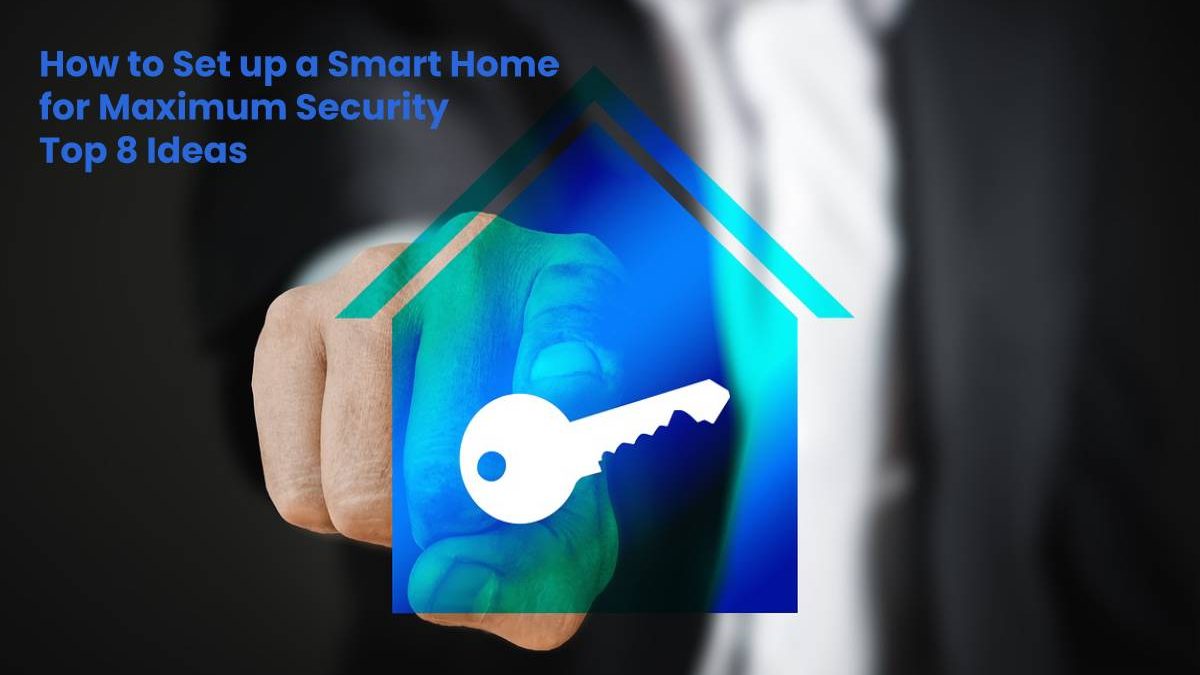You’re probably excited to get your new smart home up and running. But before you get everything set up, there is something you need to take care of first.
According to the FBI, cyber-crime is at an all-time high. Your smart home will connect you to the internet in more ways than ever, so you need to take precautions to secure your home network.
If you want to know how to set up a smart home to help with security, this post will tell you what you need to know. Below are eight things you can do to increase your home security.
Table of Contents
#1. Update Your Router
Your smart home will inevitably need access to the internet. If you want to stop attackers from getting in, then your router will need to be your first device to lockdown.
New security vulnerabilities are released all the time. Unfortunately, most routers don’t get automatic updates. You will need to update your router firmware yourself if you want to be on the latest version.
Make sure to monitor news about your router to look for updates. Try to get them installed as soon as you can.
#2. Use Two-Factor Authentication
Passwords aren’t always enough to protect your accounts. Hackers have many ways of getting into your account with or without one. The good news is that you can stop this by using two-factor authentication for your accounts.
Two-factor authentication is another step of the login process. You’ll get a code through text message, email, or an authenticator application. You won’t be able to use your password to log in without this code.
Most cloud-based services offer this option. You won’t have an issue setting two-factor authentication up for these accounts.
Local services have been a little slow on building two-factor authentication into their products. If you do use services that are hosted at home, make sure they have this option for you.
#3. Use a VPN
Are you concerned about people snooping on your internet traffic? You can use a VPN to stop this.
Any device you have that connects to a VPN connects to another web service before going to the internet. This connection protects you by encrypting all the traffic that you send. Even if someone does monitor your internet traffic, they won’t be able to see what you’re doing.
A VPN can also stop websites from seeing your physical location. Every time you visit a site, they can see your IP address. They can pinpoint your approximate location based on that.
Using a VPN causes your IP address to change. It will look like you’re located at the computer service location your VPN connects to.
#4. Create Two Wi-Fi Networks
Believe it or not, you aren’t limited to one Wi-Fi network in your home. You can buy a router that will provide you more than one.
People that connect to your Wi-Fi don’t need to connect to the one your smart home devices are on. Make sure you give them a separate one that can’t access your other devices.
Doing this will stop anyone who gets into that network from accessing your devices and private information.
#5. Read the Terms and Services of Your Devices
Do you know how much of your data your devices are collecting? If you don’t, then you need to learn more about it.
Data breaches happen at companies all the time. If a business is collecting sensitive data about you through your devices, you’ll be at risk when that happens.
Make sure to examine the terms of every device you add to your home. Make sure they don’t collect more information than you’re comfortable giving away.
There are a lot of options out there. You’ll be able to find a product that does the job and doesn’t collect every bit of data about you.
This article will provide more information to you about data your devices may be collecting.
#6. Disable Features You Don’t Use
The chances are your smart home has features you don’t use. Each one of these is a potential vulnerability. You can better secure your home by turning off all the smart home features you don’t use.
Smart home products typically come with everything turned on by default. Make sure you read your manual so you can understand everything your products do. Then go through and disable everything one by one.
#7. Only Buy From Trusted Brands
The smart home market has exploded in popularity. This trend has led to a lot of companies creating new products to take advantage of the market.
But you should be careful if you decide to buy from an unknown brand.
If a business doesn’t have the experience to secure its products, you could be putting your home at risk. Make sure every product you buy for your home is from a trusted brand or has been tested for security issues.
#8. Put a Firewall on Your Network
Do you know what internet traffic is on your network? If not, you may be the victim of a cybercrime and not know about it.
A firewall can help you protect your network. Your firewall will monitor all internet traffic that comes and goes on your home network. If it sees anything suspicious, it’s going to be blocked.
You can also use your firewall to monitor the activity on your network manually. Many devices send data back to their manufacturers. You can log into your firewall and block any data you don’t want to be sent.
Most people only use a firewall on their personal computers. But a firewall here won’t protect your smart home devices.
You can purchase a hardware firewall and connect all your internet-enabled devices to it.
Now You Know How to Set up a Smart Home for Security
By now, you should have a better idea about how to set up a smart home for better security in your home. But the above tips are only the start. Make sure to keep learning and improving on your system so you can rest easy.
Do you want to learn more about the latest gadgets that will make your life easier? Head back to our blog to read our latest reviews.
Kamran Sharief
Related posts
Recent Posts
GameStop Near Me Tennessee, United States
GameStop Near Me Tennessee, United States Are you looking for a GameStop near you? Don’t worry—you’ve found the right post….
GameStop Near Me Vermont, United States
GameStop Near Me Vermont, United States – Are you a game lover? And if you are searching for the best Gamestop…



